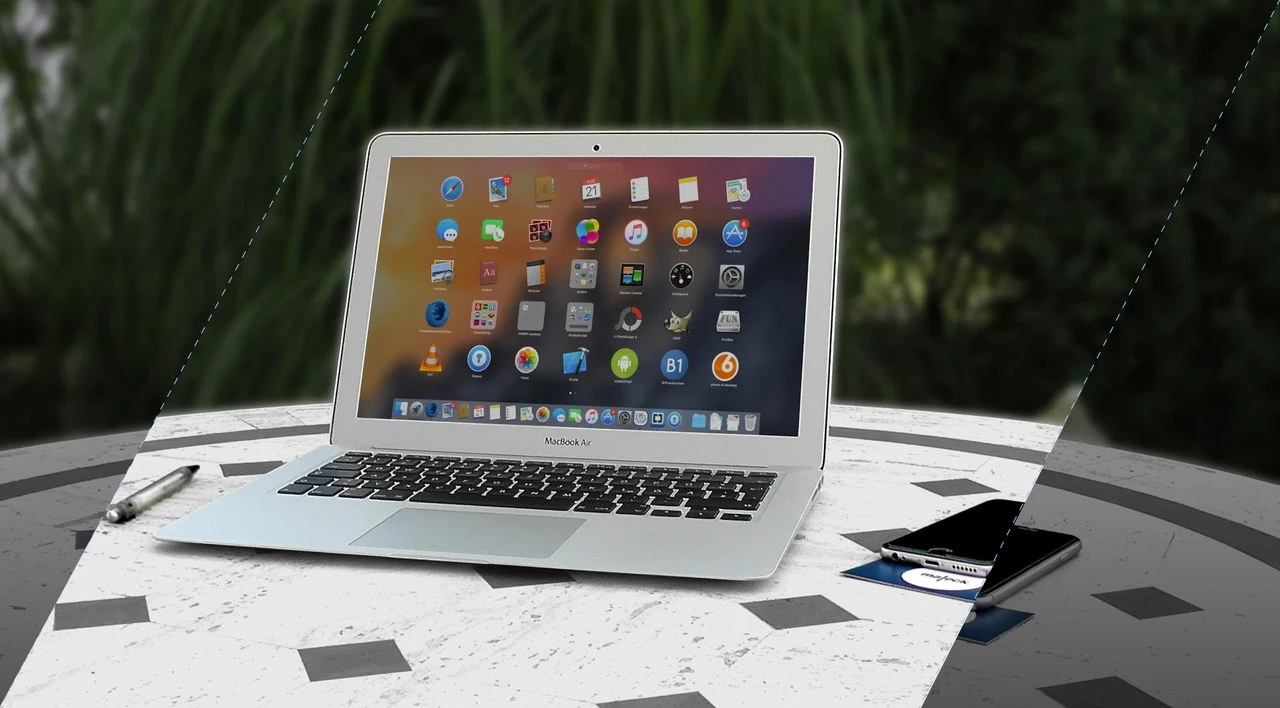SHARE
Bluetooth 5.0 vs 5.2: What’s the Difference?

Contents
Contents
The global Bluetooth 5.0 market is projected to reach a market value of $7.0 billion by 2027. Bluetooth technology has come a long way, evolving with each new version to introduce significant improvements and features. The latest versions, Bluetooth 5.0 and 5.2, have brought notable advancements to wireless technology.
But what sets them apart? What makes one better suited for your needs than the other? Let’s delve into the key features and differences between Bluetooth 5.0 and 5.2, so you can make an informed decision.
By the end of this article, you’ll have a clear understanding of the features and implications of Bluetooth 5.0 and 5.2, empowering you to make the right choice in embracing wireless technology.
Key Takeaways:
-
Bluetooth 5.0 offers improved data transfer speed, range, and increased data broadcasting capacity.
- Bluetooth 5.2 introduces the low complexity communication codec (LC3), enhanced attribute protocol (EATT), and isochronous channels (ISOC).
- Both versions have implications for IoT devices, enhancing wireless connectivity and integration.
Bluetooth Evolution
Bluetooth technology has seen remarkable progress since its debut in 1998, with annual shipment of Bluetooth audio devices reaching 1.46 billion units in 2023.
Originally developed to replace cables for short-range data transfer, Bluetooth now supports a wide range of applications, including audio streaming and home automation.
Understanding Bluetooth’s history and evolution helps in appreciating the advancements in Bluetooth 5.0 and 5.2. These versions bring significant improvements, enhancing the efficiency and versatility of wireless communication.
From its early days to its current state, Bluetooth has transformed the way we connect and interact with devices, making wireless communication more convenient and reliable.
Bluetooth’s development highlights the ongoing innovation in the wireless communication industry.
Key Features of Bluetooth 5.0
Bluetooth 5.0 introduced several key features that enhanced the wireless technology, improving data transfer speed, range, and data broadcasting capacity, ultimately enhancing the user experience.
Data Transfer Speed and Range
One of the standout features of Bluetooth 5.0 is its improved data transfer speed. Compared to its predecessor, Bluetooth 4.2, Bluetooth 5.0 offers double the data transfer speed, enabling faster pairing and eliminating latency issues.
This improvement is especially beneficial for streaming videos and movies, providing a seamless and uninterrupted viewing experience.
Bluetooth 5.0 also expanded the range over which signals can be transmitted. With a range of about 120 feet, compared to the previous 50 feet range, Bluetooth 5.0 allows for extended usability of wireless devices in various environments.
This increased range provides greater flexibility and convenience for users, ensuring stable connections even when devices are further apart.
Increased Data Broadcasting Capacity
Bluetooth 5.0 brings eight times the data broadcasting capacity of previous versions. This increased capacity allows for innovative features like Samsung’s Dual Audio, enabling audio playback on two connected devices simultaneously.
The expanded data broadcasting capacity opens up new possibilities for multi-device connections and interactive experiences, enhancing the overall functionality of Bluetooth devices.
Impact on User Experience
The key features of Bluetooth 5.0, including improved data transfer speed, extended range, and increased data broadcasting capacity, significantly enhance the user experience.
With faster data transfer speeds, users can enjoy smooth and lag-free connectivity, particularly when streaming media. The extended range enables seamless use of wireless devices in larger spaces, providing freedom of movement without sacrificing connectivity.
Additionally, the increased data broadcasting capacity allows for creative and engaging features, enriching the user experience with Bluetooth devices.
Key Features of Bluetooth 5.2
Bluetooth 5.2 introduced several new features that have further enhanced the capabilities of wireless technology. These key features provide improved audio quality, enhanced efficiency, and expanded flexibility for Bluetooth devices.
Low Complexity Communication Codec (LC3)
The Low Complexity Communication Codec (LC3) is a notable feature introduced in Bluetooth 5.2. This advanced audio codec enhances the quality of audio transmission while reducing battery consumption for audio applications.
With LC3, Bluetooth devices can deliver high-quality audio streaming while optimizing power usage, providing users with an improved audio experience.
Enhanced Attribute Protocol (EATT)
Bluetooth 5.2 also introduced the Enhanced Attribute Protocol (EATT), which enables parallel transactions between two Bluetooth devices. This enhancement significantly improves efficiency by allowing simultaneous advertising and discovery processes.
With EATT, Bluetooth devices can streamline their operations and establish connections more quickly and effectively.
Isochronous Channels (ISOC)
Another key feature of Bluetooth 5.2 is the introduction of Isochronous Channels (ISOC). ISOC allows multiple connections of Bluetooth devices to a single source, enabling seamless switching between devices.
This feature not only enhances flexibility but also opens up possibilities for enhanced broadcast capabilities, providing a more versatile and efficient wireless experience.
|
Feature |
Description |
|
Low Complexity Communication Codec (LC3) |
An advanced audio codec that enhances audio quality and reduces battery consumption for audio applications. |
|
Enhanced Attribute Protocol (EATT) |
Enables parallel transactions between two Bluetooth devices, improving efficiency and speeding up processes like advertising and discovery. |
|
Isochronous Channels (ISOC) |
Allows multiple connections of Bluetooth devices to a single source, enabling seamless switching between devices and enhancing broadcast capabilities. |
As Bluetooth technology continues to evolve, these advancements pave the way for a more seamless and enriched wireless communication experience.
Implications for IoT Devices
The advancements brought by Bluetooth 5.0 and 5.2 have significant implications for IoT (Internet of Things) device development. With improved data transfer speed, range, and capacity, Bluetooth 5.0 and 5.2 enable more efficient and reliable wireless connectivity between IoT devices.
This allows for seamless communication and integration between various smart devices in homes, offices, and other IoT applications. The increased range and data broadcasting capacity of Bluetooth 5.0 and 5.2 expand the possibilities for IoT applications, making it easier to connect and control multiple devices simultaneously.
The low complexity communication codec (LC3) in Bluetooth 5.2 also enhances audio capabilities for IoT devices, enabling better audio streaming and communication.
This means that IoT devices such as smart speakers, wireless headphones, and home automation systems can offer improved audio quality and more immersive user experiences.
The enhanced audio capabilities of Bluetooth 5.2 open up new possibilities for IoT applications in areas such as home entertainment, voice assistants, and audio communication.
Overall, Bluetooth 5.0 and 5.2 provide a solid foundation for the growth and advancement of IoT devices. The improved wireless connectivity, extended range, and increased data capacity of these Bluetooth versions enable more seamless integration and control of smart devices in IoT ecosystems.
As the IoT continues to expand and evolve, Bluetooth 5.0 and 5.2 play a vital role in enabling the efficient and reliable wireless connectivity that is crucial for the success of IoT applications.
|
Implications for IoT Devices |
Bluetooth 5.0 |
Bluetooth 5.2 |
|
Data Transfer Speed |
Improved |
Improved |
|
Range |
Extended |
Extended |
|
Data Broadcasting Capacity |
Increased |
Increased |
|
Audio Capabilities |
Standard |
Enhanced with LC3 |
Conclusion
Bluetooth 5.0 and 5.2 have significantly advanced wireless technology, enhancing data transfer speeds, range, broadcasting capacity, and audio quality. Each version offers unique features tailored to various needs and applications.
Bluetooth 5.0 excels in faster data transfer speeds and extended range, providing seamless connectivity and enhanced user experiences. In contrast, Bluetooth 5.2 offers superior audio capabilities and improved efficiency, making it ideal for those prioritizing high-quality audio.
Both versions guarantee exceptional wireless experiences and smooth integration with multiple devices. As Bluetooth technology continues to evolve, it promises even greater advancements in wireless communication and IoT applications.
For expert IoT development services that leverage the latest in Bluetooth technology, consider partnering with Flatirons. Our team can help you harness these cutting-edge features to enhance your products and services.
Frequently Asked Questions
How does Bluetooth 5.0 impact the user experience?
Bluetooth 5.0 improves the pairing process, eliminates latency issues for streaming videos and movies, and extends the range for better usability of wireless devices.
What are the key implications of Bluetooth 5.0 and 5.2 for IoT devices?
Bluetooth 5.0 and 5.2 enable more efficient and reliable wireless connectivity, seamless communication, and integration between various smart devices in IoT applications.
What are the differences between Bluetooth 5.0 and 5.2?
Bluetooth 5.0 offers faster data transfer speed and extended range, while Bluetooth 5.2 provides advanced audio capabilities and improved efficiency.
IoT Development Services
Harness the power of IoT with Flatirons Development1 innovative IoT development services.
Get the CEO's Take
Handpicked tech insights and trends from our CEO.
IoT Development Services
Harness the power of IoT with Flatirons Development1 innovative IoT development services.
Get the CEO's Take
Handpicked tech insights and trends from our CEO.

What is IT OT Convergence? Streamlining Operations for Efficiency
Flatirons Development
Oct 28, 2025
Secure Mobile App Development: Prioritizing Data Protection
Flatirons Development
Oct 22, 2025
What is Data Ingestion? Definition, Types, and Best Practices for Efficient Data Processing
Flatirons Development
Oct 16, 2025
Enterprise Computing: Transforming Business Operations
Flatirons Development
Oct 09, 2025
Explore the Top Embedded Systems Examples of Today
Flatirons Development
Oct 04, 2025
What is IT OT Convergence? Streamlining Operations for Efficiency
Flatirons Development
Oct 28, 2025
Secure Mobile App Development: Prioritizing Data Protection
Flatirons Development
Oct 22, 2025
What is Data Ingestion? Definition, Types, and Best Practices for Efficient Data Processing
Flatirons Development
Oct 16, 2025
What is IT OT Convergence? Streamlining Operations for Efficiency
Flatirons Development
Oct 28, 2025
Secure Mobile App Development: Prioritizing Data Protection
Flatirons Development
Oct 22, 2025
What is Data Ingestion? Definition, Types, and Best Practices for Efficient Data Processing
Flatirons Development
Oct 16, 2025
What is IT OT Convergence? Streamlining Operations for Efficiency
Flatirons Development
Oct 28, 2025
Secure Mobile App Development: Prioritizing Data Protection
Flatirons Development
Oct 22, 2025
What is Data Ingestion? Definition, Types, and Best Practices for Efficient Data Processing
Flatirons Development
Oct 16, 2025